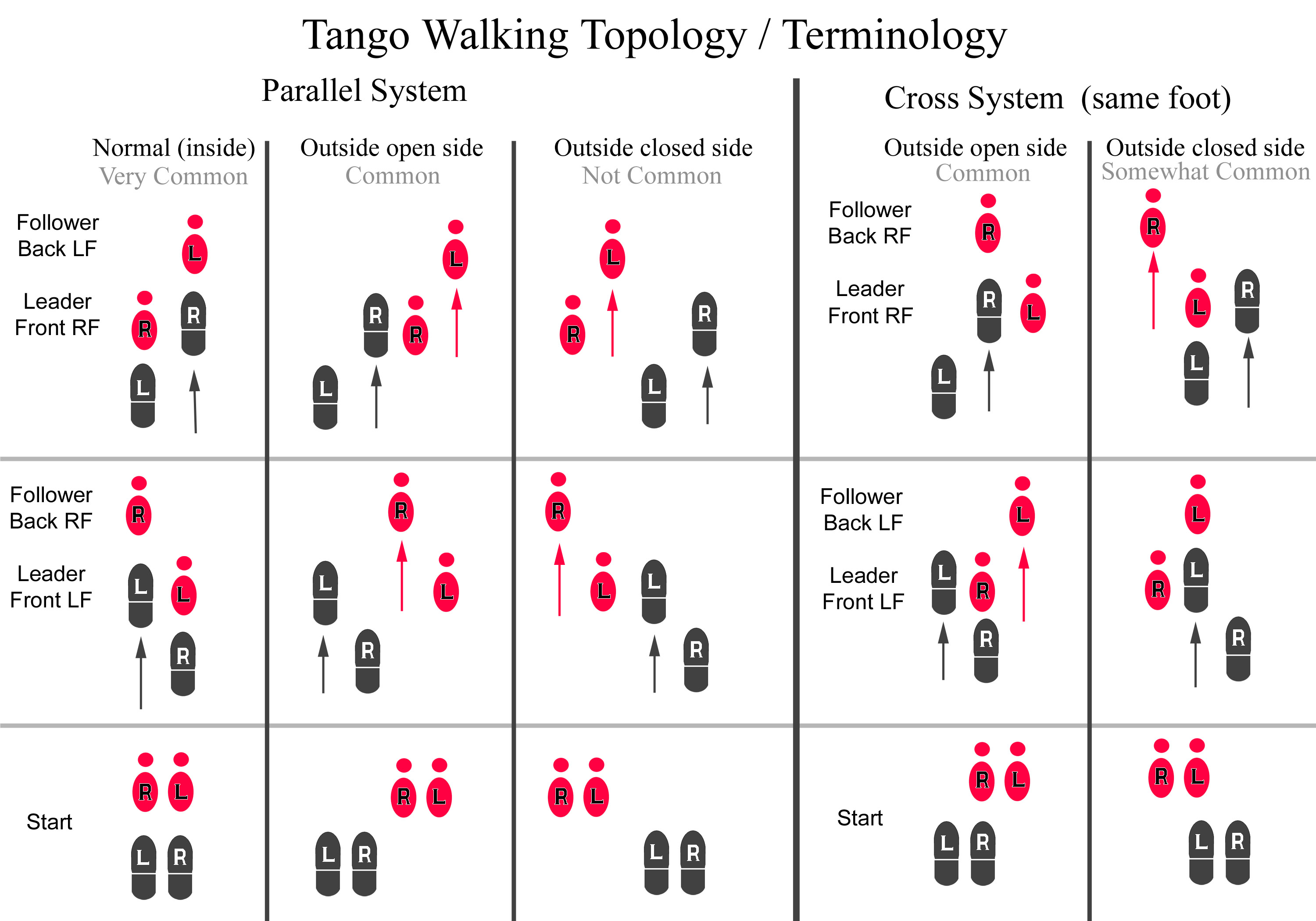Argentine Tango Syllabus: Section E: Common Patterns
(See the Syllabus page for a list of the other topics in the syllabus.)
E1: The Cross
Referring to when a dancer (most often the follower) crosses one foot in front or behind the other.
The most common use of this is when the follower crosses steps back and crosses her left leg over her right. The sequence for this use involves:
- Leader leads the follower to extend her leg straight back as the first part of a back step
- Follower transfers weight to the back foot
- Leader leads the follower's free leg to transfer (diagonally) in front of her back leg, into a crossed position. (Note that followers need to keep their hips facing the leader at this point)
- The follower then transfers her weight to the front leg, ready to move back with the back leg
E2: Forward Ocho
Commonly done by the follower, conceptually this involves a pivot plus a forward step (or, a forward step then a pivot)
- Done when the follower is perpendicular to the leader
- The step (then pivot) is done on the leg closest to the leader
- The follower must keep her upper body facing the leader as far as possible
- Can be led in with no leader foot movement (i.e. leader leads with chest only), or in crossed-system with the leader taking sidesteps alongside the follower's forward steps.
E3: Back Ocho
Concept: Pivot + backstep (usually led in crossed-system)
Commonly done by the follower, conceptually this involves a pivot plus a back step (or, a back step then a pivot):
- Done when the follower is perpendicular to the leader
- The step (then pivot) is done on the leg furthest from the leader
- The follower must keep her upper body facing the leader as far as possible
- Is best led in crossed-system with the leader taking sidesteps alongside the follower's forward steps.
- Does not work well with no leader foot movement (i.e. leader leads with chest only), because of the follower's axis being further away
- Common variation - travelling back ochos where the leader's steps are diagonally forward in the line of dance.
E4: Giros (molinetes)
Leader pivots, Follower steps around the leader, in a grapevine step/pattern around the leader: Back -> Side -> Forward & Pivot -> Side & Pivot -> repeat
- This pattern can start (or stop) on any step (Forward, side, or back)
- The follower must aim to stay directly in front of the leader's chest (or catch up as soon as possible), but must not overtake the chest movement
- Collect (and pivot as needed) between each step
- The Back - Side - Front portion can often be danced to a quick - quick - slow rhythm, as no pivots are required.
E5: Track variations
- 2-track: Walking in parallel in front of the partner.
- 3-track (Crossed system): Man slightly offset from the woman, and "Middle" legs move in synchronisation - typically the man's right leg moves in synch with the woman's left leg, but can be done on either side.
- 4-track: Walking in parallel to one side of the partner (typically with the follower on the leader's right side, but can be done on either side).
Diagram illustration:
